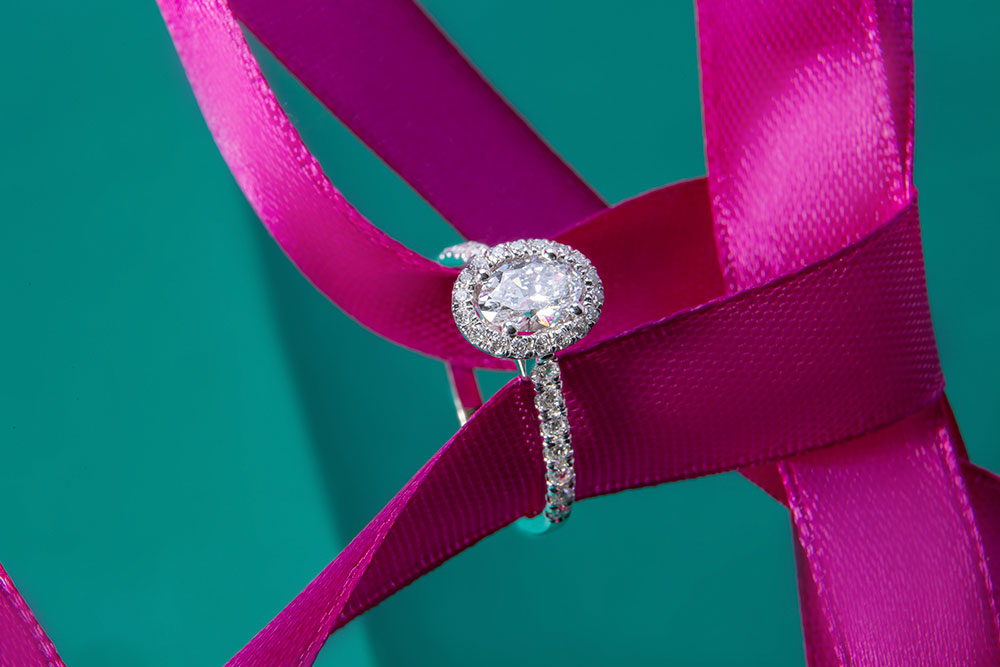- Home
- Jewelry catalog Jewelry catalog
- Diamonds Diamonds
- IQ Diamonds Studio
- Stocks
- Calculator
- Information
- About company
-
Ask a question
1121059, Moscow,
Bolshaya Dorogomilovskaya str., 1st, 2nd floor

Stars and diamonds
01.17.2024
Couples are beginning to realize that lab-grown diamonds can make an engagement cheaper or get a larger gemstone for the same money. But they also face awkwardness in this matter.
Wedding planner Sterling Boulet has some advice for brides-to-be about grown diamonds, which cost a fraction of the price of natural gemstones.
"If you e trying to get your man to propose, hell propose sooner if you offer it as an option," says Boulet, of Raleigh, North Carolina. She adds that recently a friends fiancé "thanked me three times—every time I met him"—for telling him about a more affordable option: a lab-grown diamond.
Man-made diamonds and diamonds are gaining popularity, despite some existing prejudices. This year, for the first time, sales of synthetic and natural diamonds, which are primarily used as center stones in engagement rings, were evenly divided, according to jewelry and diamond trend analysis firm Tenoris.
However, the growing use of synthetic stones, along with the benefits, also causes strange attitudes towards this. Now that larger engagement rings (over two or three carats) have become more affordable, more and more people are faced with the challenge of wearing fairly large stones.
... Esther Hare, a 5-foot-11 former triathlete, last year was looking for a 4.5-carat oval-shaped synthetic diamond that would fit her large hands to a marriage ceremony to take place in Hawaii. It was much larger than the half-carat ring her husband gave her as an engagement gift more than 25 years ago, and larger than the 1.5-carat ring they bought 10 years ago to upgrade their engagement ring to a larger ring. Hare, 50, who lives in San Jose, California and works in the tech industry, chose a $40,000 synthetic diamond because "its crazy" to spend $100,000 on a natural stone. “He had to be big - that’s how I imagined him,” says Esther.
But due to its size, the ring was sometimes not very practical. Esther doesn wear it to sports practice and instead changes her wedding ring. And she tries to leave it at home when traveling. “I often don take it with me on vacation because its just huge,” she says.

But due to its size, the ring was sometimes not very practical. Esther doesn wear it to sports practice and instead changes her wedding ring. And she tries to leave it at home when traveling. “I often don take it with me on vacation because its just huge,” she says.
The average retail price of a one-carat, loose-grown diamond fell to $1,426 this year from $3,039 in 2020, according to Tenoris. Loose natural diamonds of similar size were priced at $5,426 this year, down from $4,943 in 2020.
Synthetic diamonds have essentially the same chemical composition as natural diamonds and look the same unless viewed with sophisticated equipment to determine the characteristics of the light emitted.
At Ritani, an online jewelry retailer, sales of lab-grown diamonds account for about 70% of all diamonds sold, up from about 30% two years ago, said Juliet Gomes, head of customer service for the White-based company. Plains, New York.
Ritani sometimes records videos of cultured diamonds making a pulse when exposed to a "diamond tester," an authenticity tester, to show customers that man-made stones behave the same as natural stones. “We have really passionate conversations with them,” Gomez says.
Not all dealers in the gem market sell these stones.
When Boulet, a Raleigh wedding planner, got engaged, she was over the moon when her fiancé proposed to her with a 2.3-carat lab-grown diamond ring. “Its very shiny, we were actually worried it would be too sparkly and would look fake,” she says.
This is not the case, and it creates another challenge: looking like someone who has actually shelled out for jewelry. Boulet sometimes ventures to say that her ring is a fake diamond.
"I don want people to think Im stuck up or trying to look more glamorous than I am," she says.

… For Daniel Teoh, a 36-year-old software engineer from suburban Detroit, buying a cheaper synthetic diamond for his fiancée meant freeing up more money from his $30,000 ring budget.
Instead of a larger ring, he gave her something that they both might like. During a ski trip to South Lake Tahoe, California, where they went annually, Theo popped the question and handed his now-wife a handcrafted wooden box containing a 2.5-carat synthetic diamond ring and a car key.
She put the ring on, celebrated her engagement with both of their sisters and a friend who was the unofficial photographer of the happy occasion, and then they drove back home. There she saw a 1965 Mustang GT coupe in Wimbledon White with red ribbons and a bow on top.
Remembering this, Theo says that it was the diamond that made the most impression.
“It wasn’t until 15 minutes later that she asked, ‘Well, what is this key?’” he adds.
The Wall Street Journal (wsj.com)
Log in to your personal account